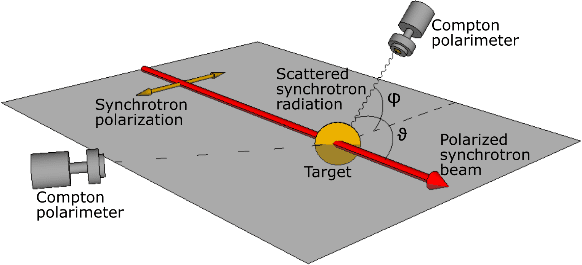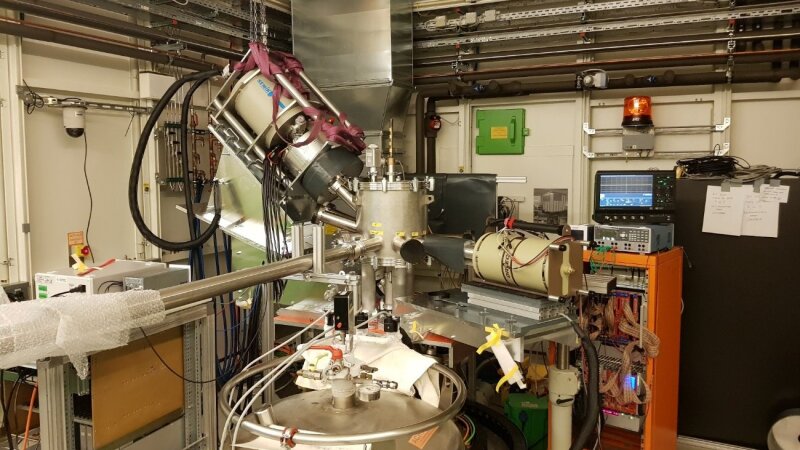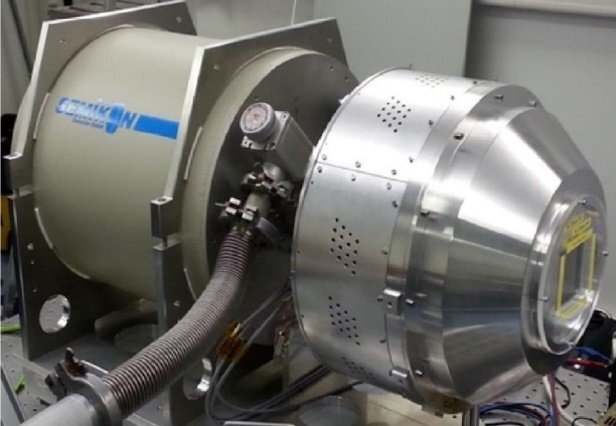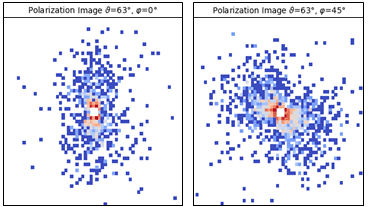Polarization studies of elastically scattered hard X-rays
Involved Staff:
W. Middents1,2, G. Weber1,3, U. Spillmann3, M. Vockert1,2, T. Krings4, Th. Stöhlker1,2,3
1Helmholtz-Institut JenaExternal link
2Institut für Optik und Quantenelektronik, Friedrich-Schiller-Universität Jena
3GSI Helmholtzzentrum für Schwerionenforschung GmbHExternal link
4Institut für Kernphysik, Forschungszentrum JülichExternal link
Elastic scattering of photons by atoms describes the scattering process in which the energy of the incident and the scattered photon are equal. In the range of hard X-rays up to a photon energy of several 100 keV, this process is dominated by the so-called Rayleigh scattering, the scattering by the bound electrons of the atomic target. This scattering process can be described in the framework of quantum electrodynamic calculations, showing a strong influence on the polarization properties of the scattered radiation [1]. Thus, the determination of the polarization transfer in Rayleigh scattering can serve to verify the underlying theory.
In previous measurements, the elastic scattering of highly linearly polarized hard X-ray radiation has already been investigated for the case that the scattering plane spanned between incident and scattered radiation coincides with the polarization plane of the incident radiation [2]. Here it could be shown that the scattered radiation is still polarized in the scattering plane, but shows a depolarization strongly dependent on the scattering angle.
In our current measurement, we have left the polarization plane of the incident radiation. Here, in addition to a depolarization of the scattered beam, a tilting of the polarization vector with respect to the scattering plane is to be expected [3].
Sketch of the measurement geometry: The highly linearly polarized synchrotron beam is scattered by a gold target with a thickness of 1 µm. The scattered radiation can be detected at several positions using a Compton polarimeter.
Illustration: W. MiddentsFor this purpose, Rayleigh scattering of the highly linearly polarized hard X-rays (175 keV) from a thin gold foil (≈ 1 μm) was investigated during a beam time at the PETRA III synchrotron facilityExternal link in Hamburg. The investigation of the polarization properties of the scattered radiation was performed using a segmented semiconductor detector serving as a Compton polarimeter.
Photo of the latest measurement in Hamburg. Scattering from the gold foil is done inside a vacuum chamber to minimize background radiation. The vacuum chamber has several windows to measure the scattered radiation. In addition to the measurement using a Compton polarimeter (left), a germanium semiconductor detector (right) was used to measure high-resolution energy spectra.
Image: W. Middents-
Semiconductor Strip-Detectors as a Compton-Polarimeter
When studying the dynamics of atomic processes, the analysis of polarization phenomena allows unique insights. In the range of hard X-rays, conventional polarization methods fail due to the high photon energies. This is remedied by the Compton effect, whose scattering distribution exhibits strong polarization sensitivity.
In order to use the Compton effect to study polarization properties, special segmented semiconductor detectors were developed in collaboration with the GSI Helmholtzzentrum für Schwerionenforschung GmbHExternal link in Darmstadt and the FZ JülichExternal link. Due to the strip geometry of the detector crystals, a simultaneous spatially resolved and energy resolved measurement of incident photons is possible.
In addition to the simple absorption of incident radiation, Compton scattering of photons in the detector crystal can also occur, in which part of the photon energy is transferred to an electron of the detector crystal. If both the electron and the Compton-scattered photon are detected in the detector, the scattering distribution can be reconstructed if there is a sufficient number of such events, which provides information about the polarization properties of the incident radiation.
References
[1] U. Spillmann et al., Rev. Sci. Instrum. 79, 083101 (2008)External link
[2] G. Weber et al., J. Phys.: Conf. Ser. 583, 012041 (2015)External link
[3] M. Vockert et al. Nucl. Instrum. Methods Phys. Res., Sect. B 408, 313 (2017)External link
Compton Polarimeter
Image: U. Spillmann
The results of this experiment are currently being evaluated. First results already show the expected tilting of the polarization vector of the scattered radiation.
Exemplary polarization measurement of the radiation elastically scattered at the gold target. The distribution of the photons scattered in the Compton polarimeter for different measurement positions is shown. On the left for a measurement inside the polarization plane of the synchrotron beam, on the right for a measurement outside the polarization plane. One can easily see a rotation of the characteristic scattering distribution in the detector, indicating a rotation of the polarization vector of the scattered radiation.
Graphic: W. MiddentsReferenzen
[1] A. Surzhykov et al., J. Phys. B: At. Mol. Opt. Phys. 48, 144015 (2015)External link
[2] K.-H. Blumenhagen et al., New J. Phys. 18, 103034 (2016)External link
[3] S. Strnat el al. Phys. Rev. A 103, 012801 (2021)External link



